2 nights in Fairfield by Marriott
Amritsar, as most Indians are aware, is a city steeped in history and spirituality. It is the second largest city in Punjab and a cultural and religious hub. It is the location of the holiest Sikh shrine, the Golden Temple. The city is also famous for its delectable Punjabi cuisine, lively streets, and colorful bazaars. We spent about 2 days visiting all the places on this page.
Sites around Amritsar:
- Heritage Street
- Golden Temple
- Jallianwala Bagh
- Wagah Border
- Atari Rail Station
- Partition Museum
- Baba Atal Tower
- Khalsa College
- Gobindgarh Fort
- Durgiana Temple
- Ram Bagh Gardens
- Food in Amritsar
Heritage Street – The Golden temple is the most visited place in Punjab with over 100,000 visitors daily. The stretch from Golden Temple to Town Hall was messed up with vehicles overhead cables, encroachments and street hawkers. The street was reconstructed and opened on 26 October 2016 as a tourist attraction and no-vehicle zone.
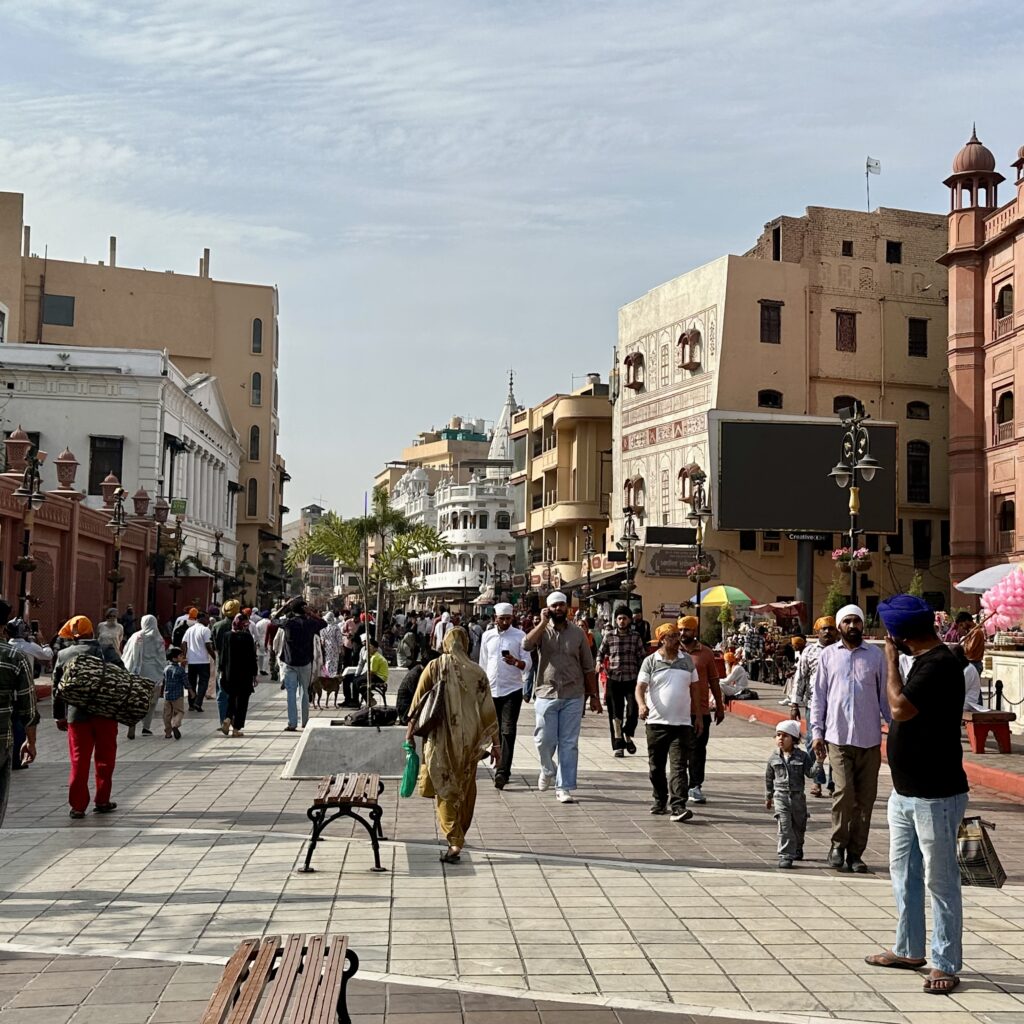
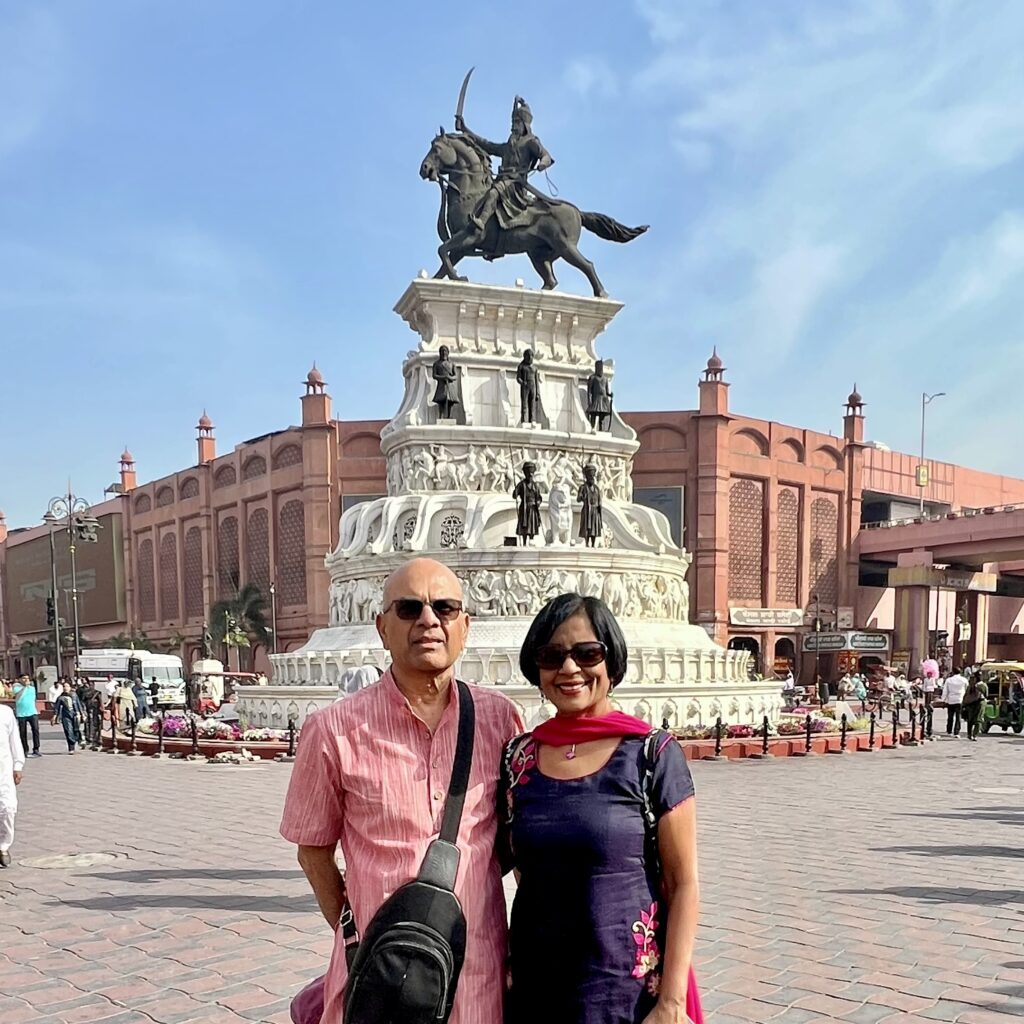
Golden Temple – Also known as Sri Harmandir Sahib, Golden Temple is the holiest shrine in all of Sikhism. Located in the heart of the city, the 2-storied temple is primarily made of marble and copper with its upper portion plated in real gold. The temple attracts a large number of visitors and devotees each day. The stunning temple is surrounded by Amrit Sarovar (Pool of Nectar), a man-made lake that was constructed by the 4th Sikh Guru, Guru Ram Das in 1577. The lake is a sacred place for Sikhs, with pilgrims often taking a dip in the water as it is said to have healing powers.
You’ll need to cover your head, remove your shoes, and step through a small stream of running water to cleanse your feet.
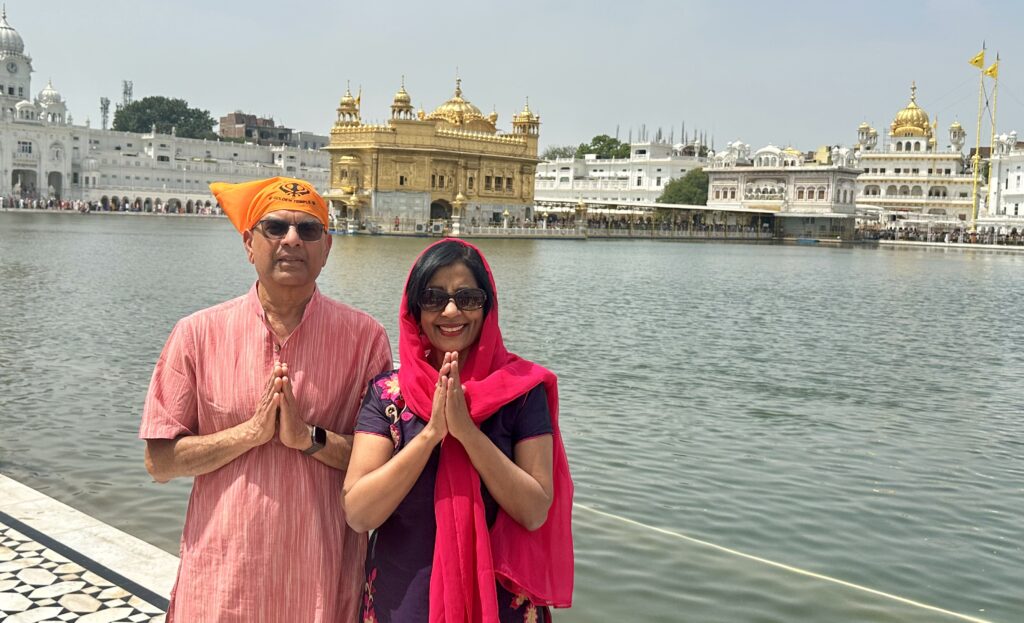
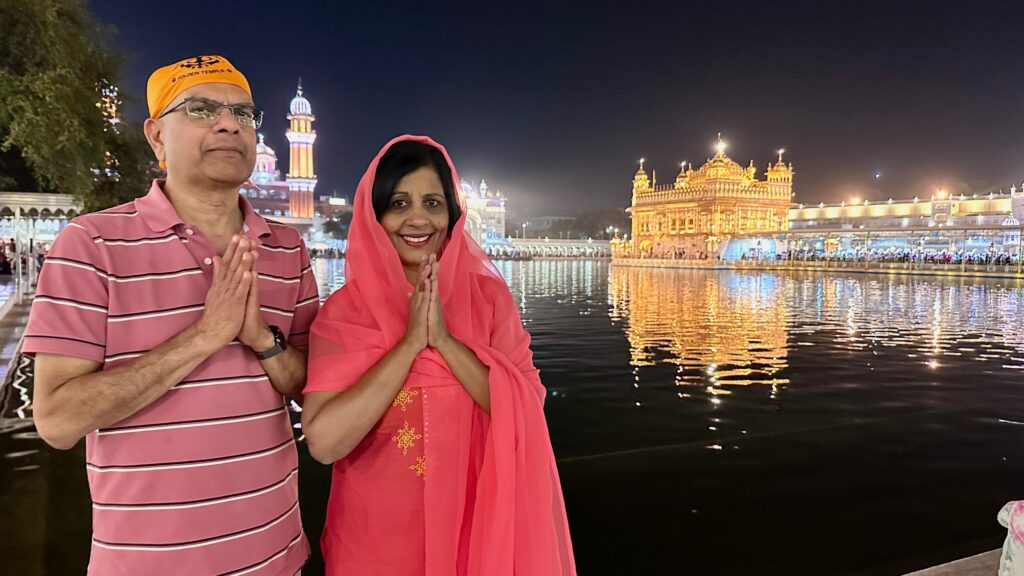
Golden Temple, Dining and Kitchen (AKA Langar) – The temple’s community kitchen (largest in the world) serves free food to over 100,000 people from all walks of life. You can see hundreds of volunteers cutting vegetables, washing dishes, making rotis and dal. The kitchen at the gurudwara features two huge dining halls, which can accommodate 5000 people at a time. People sit down on the floor and the food which is vegetarian, is served by the volunteers.
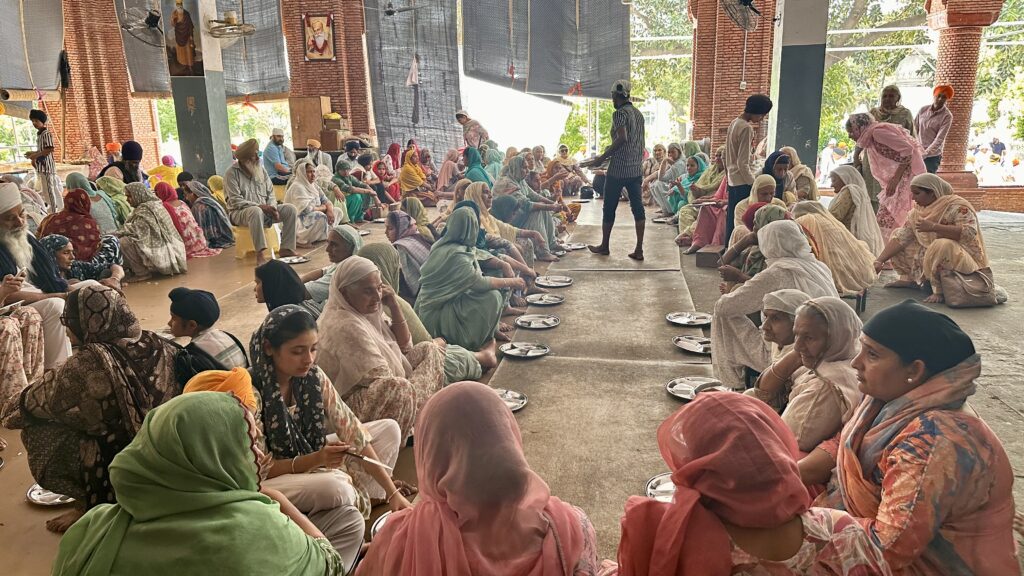
Baba Atal Tower – This architectural marvel is a Gurudwara (Sikh Temple) located inside the Golden Temple complex. The historic shrine was built in honor of Baba Atal Rai, son of Guru Har Gobind Singh. The 9 story octagonal tower represents a year in Atal Rai’s life as he passed away at the young age of 9. Originally, a samadhi of Baba Atal Rai the building slowly transformed into a Gurudwara.
It is the tallest tower in Amritsar alongside the Kaulsar Sarovar. The tower houses many miniature paintings of the life and teachings of Guru Nanak, the first Sikh Guru. The last story of the tower offers visitors a birds-eye view of the bustling town of Amritsar. The tower was not open for visitors on the day we visited.
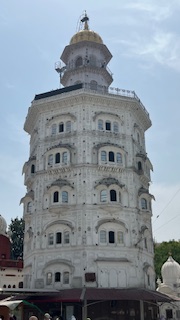
Jallianwala Bagh – This place is located within walking distance of the famous Golden Temple. It is public garden spread over 6.5 acres that also houses a memorial to commemorate the massacre of more than 1000 peaceful Indian protestors, by the British forces.
Jallianwala Bagh is associated with one of the saddest days in Indian History when thousands of innocent Indians were killed on the orders of the evil British General Dyer as they gathered for a peaceful protest to release imprisoned leaders of the Indian Independence Movement in 1919. There is the wall which still bears the marks of the bullets that were hurled blindly at the civilians and a well in which many people jumped to save themselves from the onslaught of the bullets as all the exits were closed. An air of eerie calm still lingers over the Jallianwala Bagh and gives one a feeling of indescribable sadness and peace.
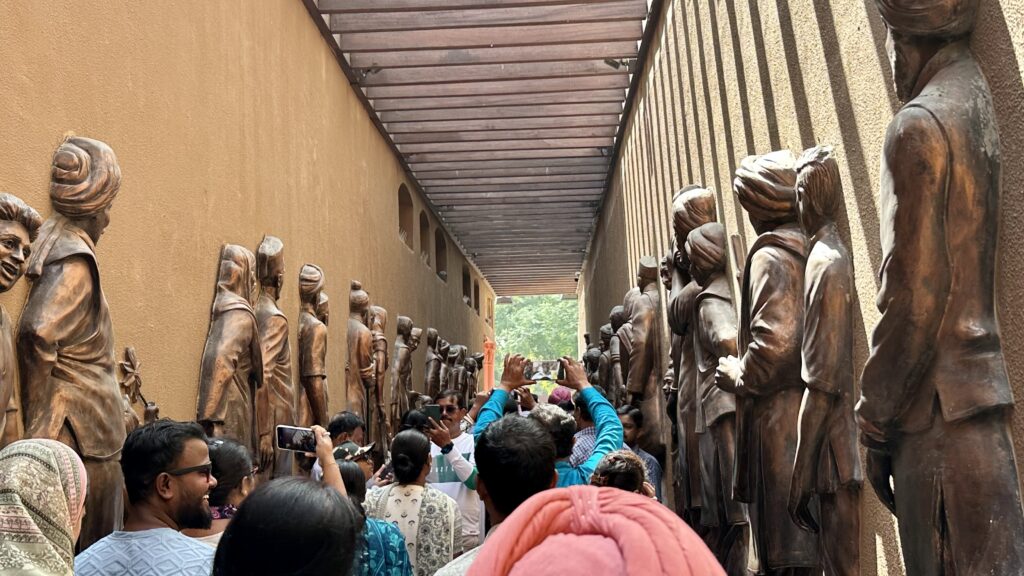
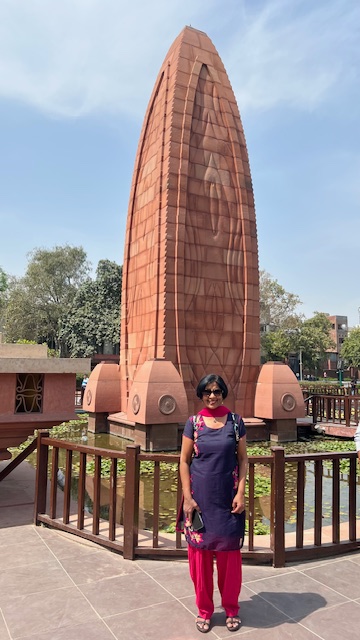
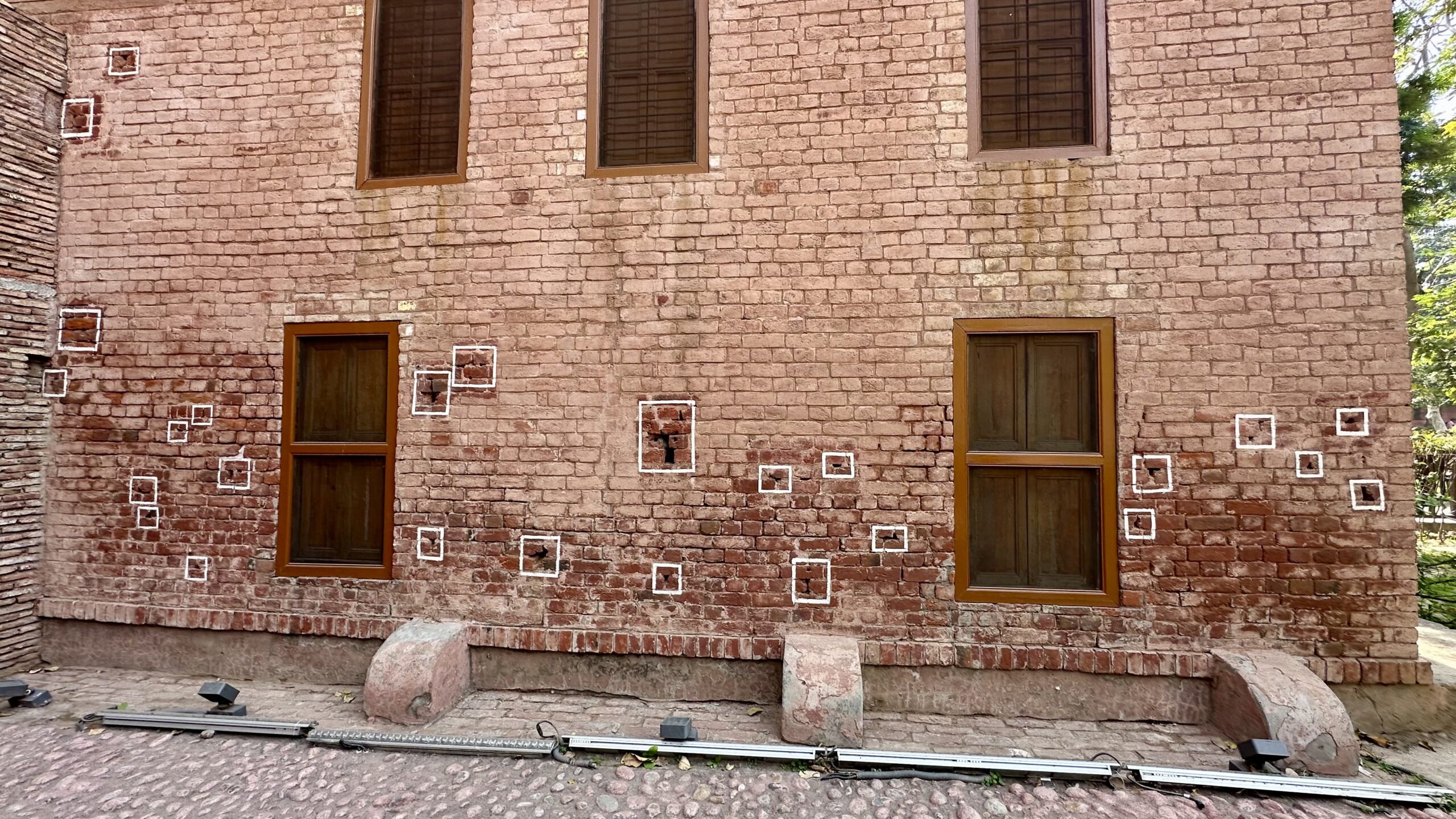
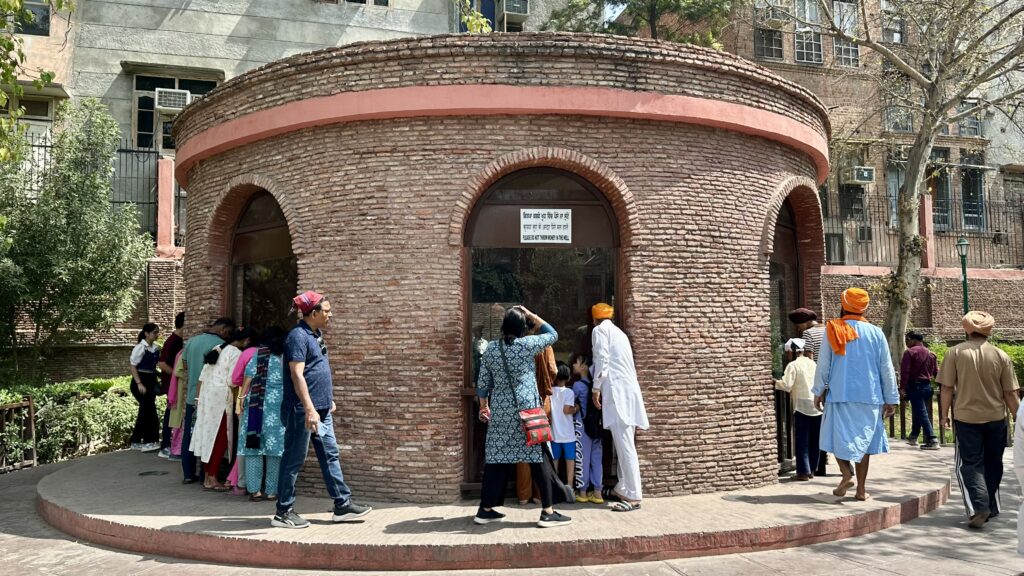
Wagah Border – marks the boundaries between Indian and Pakistani. It is located at a distance of 22 km from Lahore, Pakistan and 28 km from Amritsar in India. The Wagah Border Ceremony or the Beating Retreat Ceremony is held here every day in the evening before sunset, when the soldiers from the Indian and Pakistan military meet at this border post to engage in a 30-minute display of military camaraderie and showmanship.
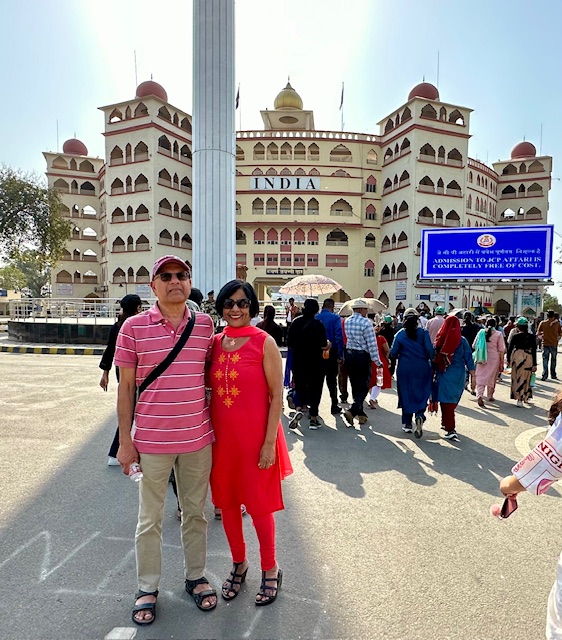
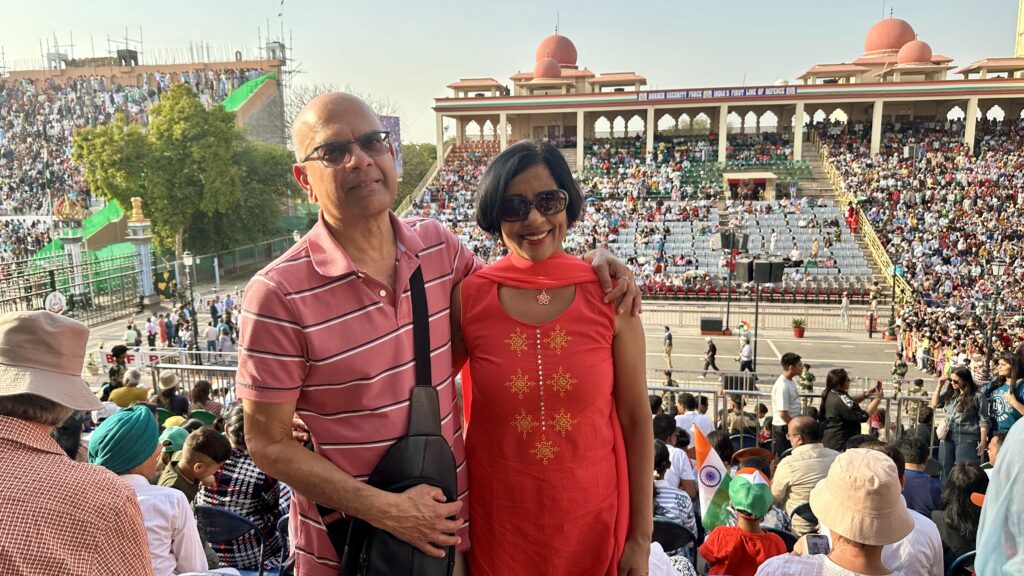
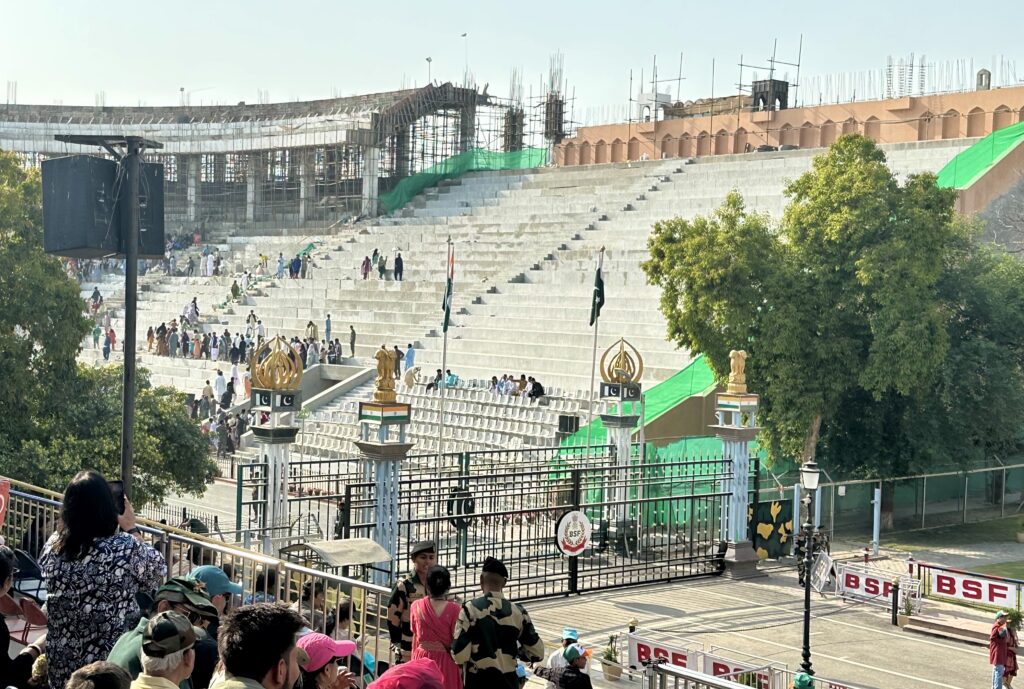
This ceremony includes the closing of the international gates and lowering the flags of both countries. The flag ceremony has been conducted by the Indian Border Security Force and Pakistan Rangers since 1959. During the build-up to the ceremony, the crowd on the Indian side is loud with Indian national anthem, and Bollywood songs blasting from the speakers. Women dance to Bollywood songs and crowd in the stands wave Indian flags.
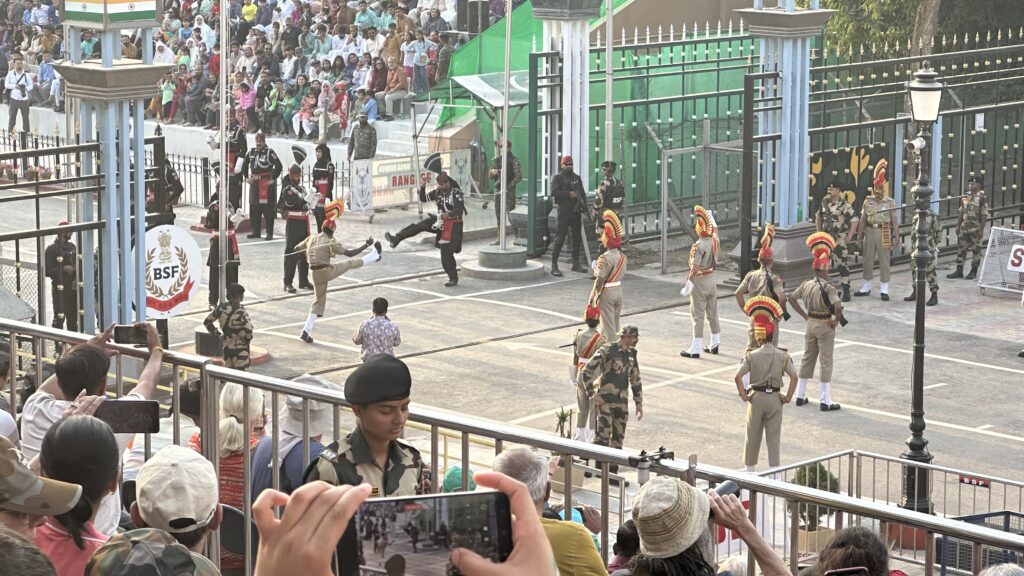
Tip – The stadium gets crowded by 4:45pm. Try to be there by 4:15pm to get good seats. Also, if you are a foreign passport holder, remember to bring your passport along, as there is a separate, not crowded, and better seating area for foreigners. Remember to bring a hat and bottled water as it gets quite hot during the time of the ceremony.
Attari Rail Station – Established in 1889, Attari functions as an international transit point, unlike other Indian railway stations, due to its proximity to the India-Pakistan border. Passengers need a valid passport and visa similar to an airport, because of its role as an entry/exit point between India and Pakistan.
The Samjhauta Express which was the train service connecting India and Pakistan was suspended on August 8, 2019 by India after Pakistan suspended its operations. The immediate trigger for the suspension was India’s revocation of Article 370 of the Constitution, which granted special status to Jammu and Kashmir, a move strongly criticized by Pakistan.
As this place is close to the Wagah border ceremony stadium, you can plan a 10 min stop here before you head to Wagah border stadium.
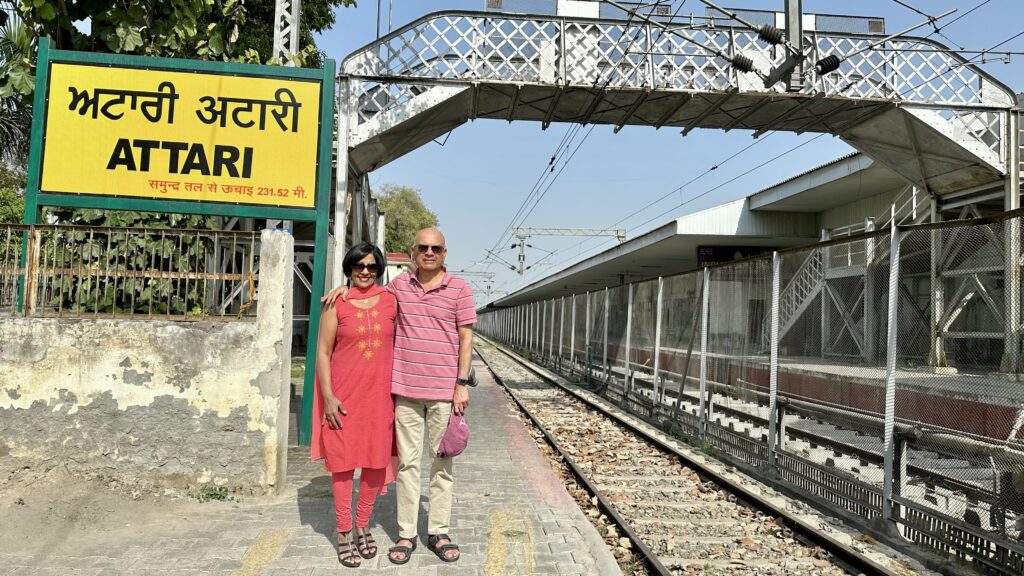
Partition Museum – This museum houses photographs, newspaper clippings, personal items donated by people who had witnessed and lived during the partition of the sub-continent in 1947. Located at the Town Hall in Amritsar and developed by the Arts and Cultural Heritage Trust (TAACHT), the museum is a part of the newly inaugurated Heritage Street at Amritsar, which begins from the Golden Temple and ends at the Town Hall.
The Partition of India and Pakistan along the religious lines resulted in massive forced migration, which in turn caused widespread violence, with millions displaced and killed. Visiting the museum will give you a better understanding of the source of rivalry between India and Pakistan. Photography is not allowed inside the museum.
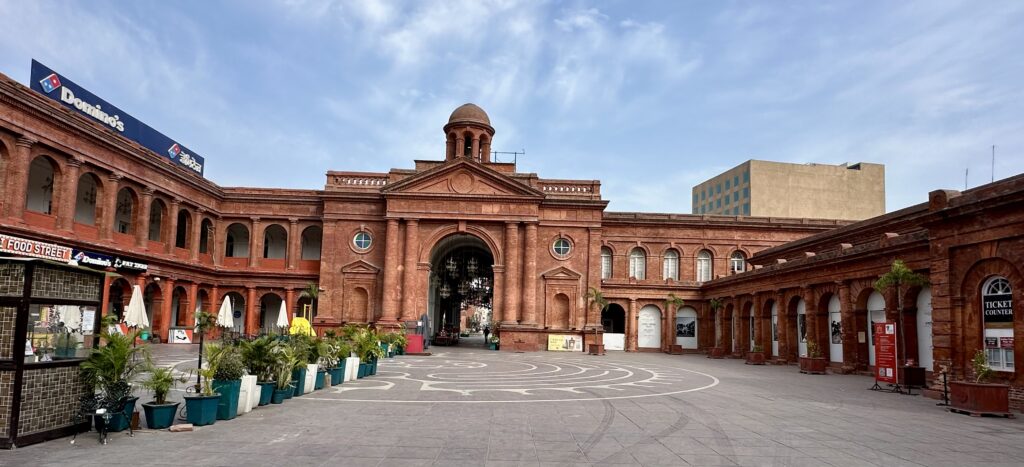
Khalsa College – This historic educational institution is 124 years old and has acquired the status of the highest Sikh institute for education with an enriching environment and a progressive outlook towards society. Its architecture is Indo-Saracenic, a mash-up of Western European aesthetics with the exuberance of Indian and Persian styles. Over the years Khalsa college has become Bollywood’s favorite shooting destination, with movies like Veer Zara, Rab Ne Bana Di Jodi, Junooniyat etc. being shot here.
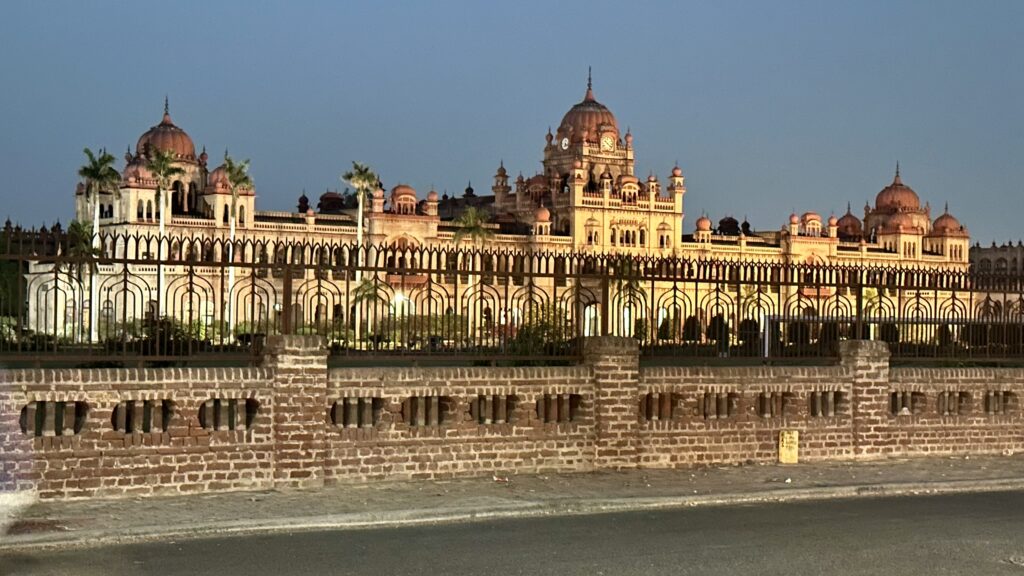
Visitors who wish to see the college need to take prior permission from the authorities.
Gobindgarh Fort – Built in the 18th century, this is a historic military fort located in the center of the city. The Fort was until recently under the Indian Army, but was opened to the public on 10 February 2017.
Today the fort is a historical museum and cultural theme park showcasing the history of Punjab and Punjabi culture in all its glory. There are various museums featuring collections of traditional Punjabi attire, household items and even weapons of war from the olden days. There are also live shows where performers entertain the audience with artforms such as Bhangra and the traditional martial art known as Gatka.
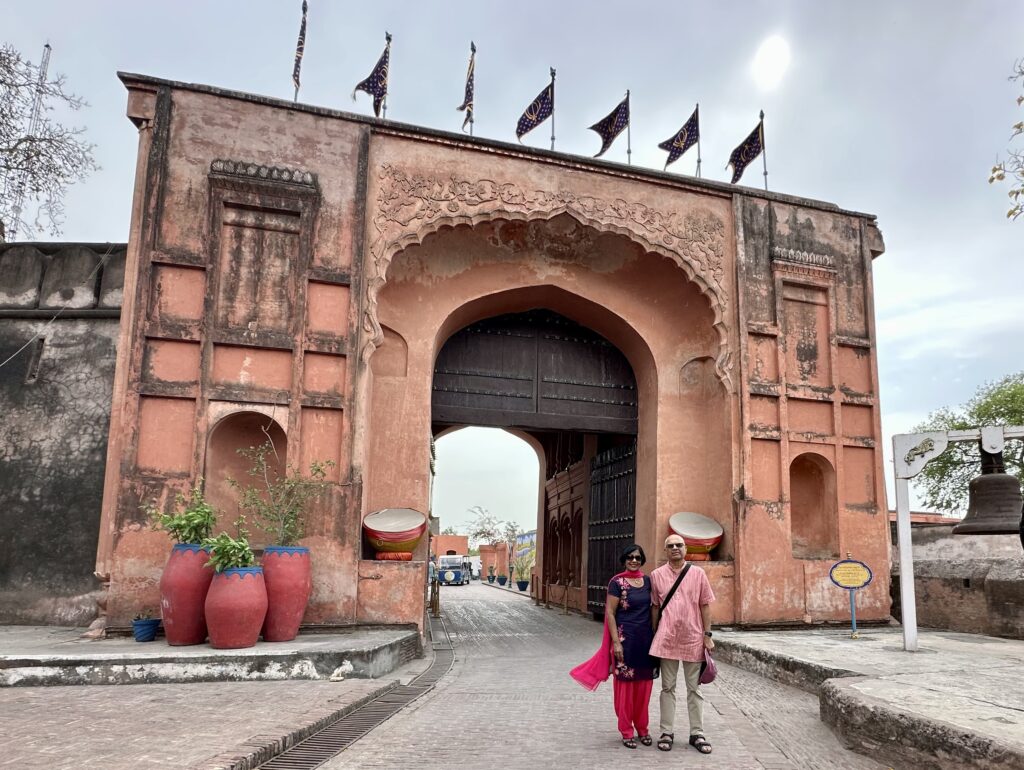
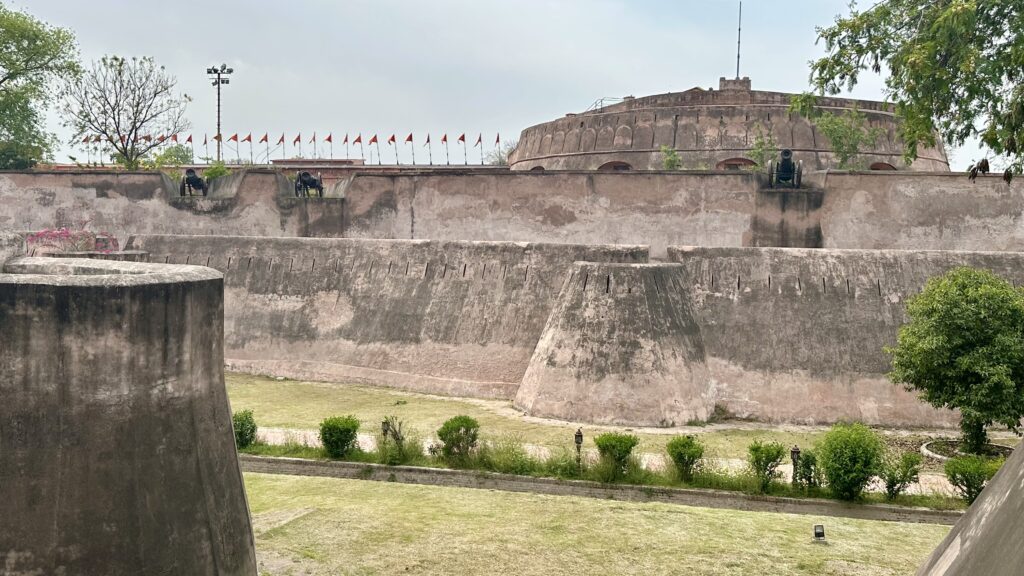

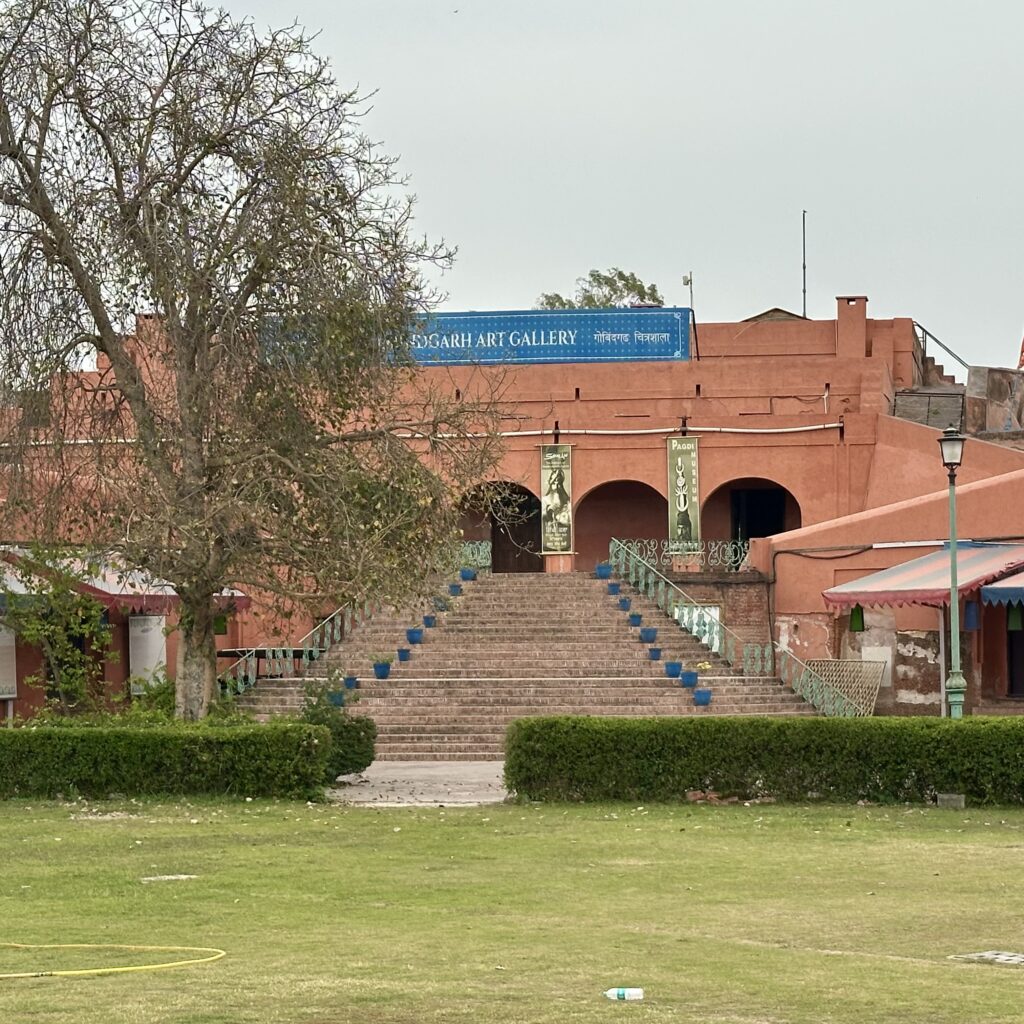
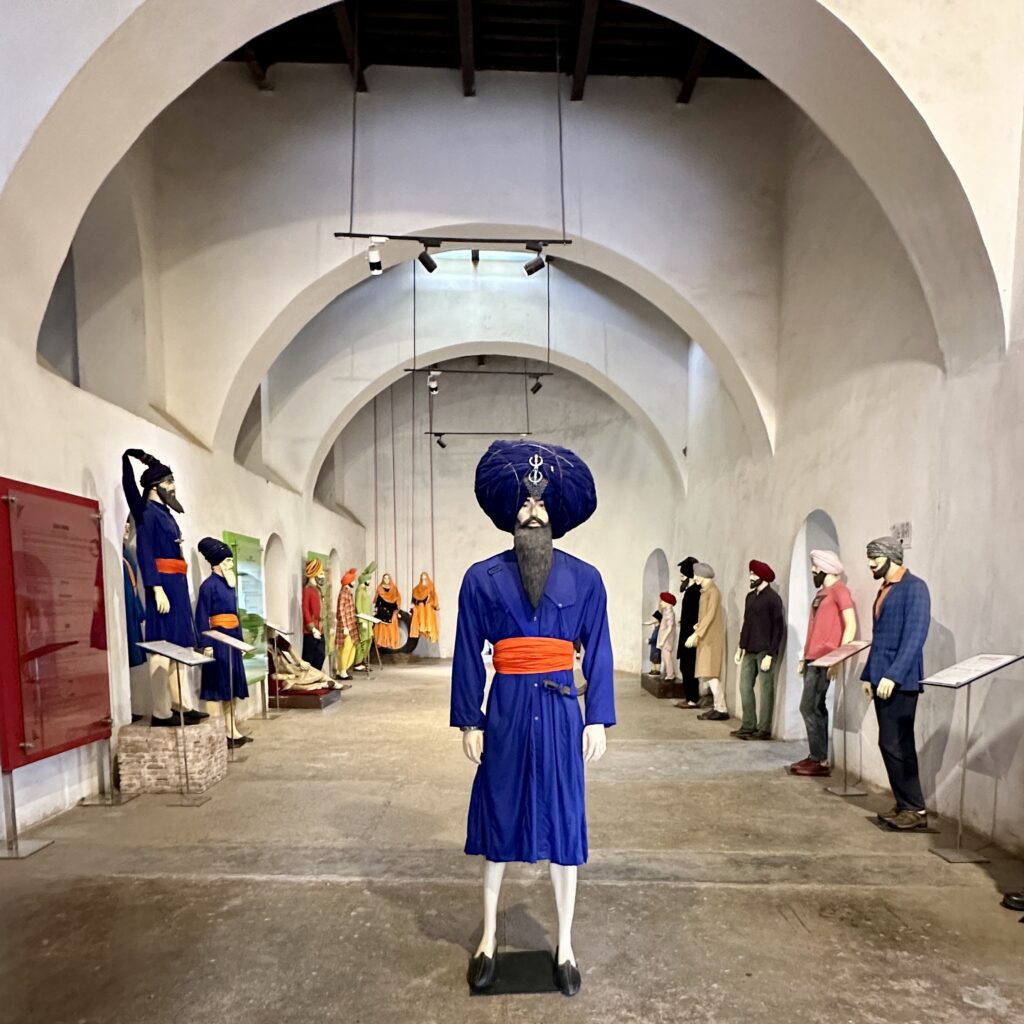
Durgiana Temple – Although it is believed that this Hindu Temple was built in 1921, the original temple at this site was built in 16th century. Also known as the Lakshmi Narayan Temple, it resembles the Golden Temple with its half gold, half marble facade, domed structure and a lake around it. The temple is dedicated to warrior goddess Durga, wealth goddess Lakshmi, and Vishnu, the protector of the universe. It is also called the Silver Temple because of the exquisite silver door at the entrance.
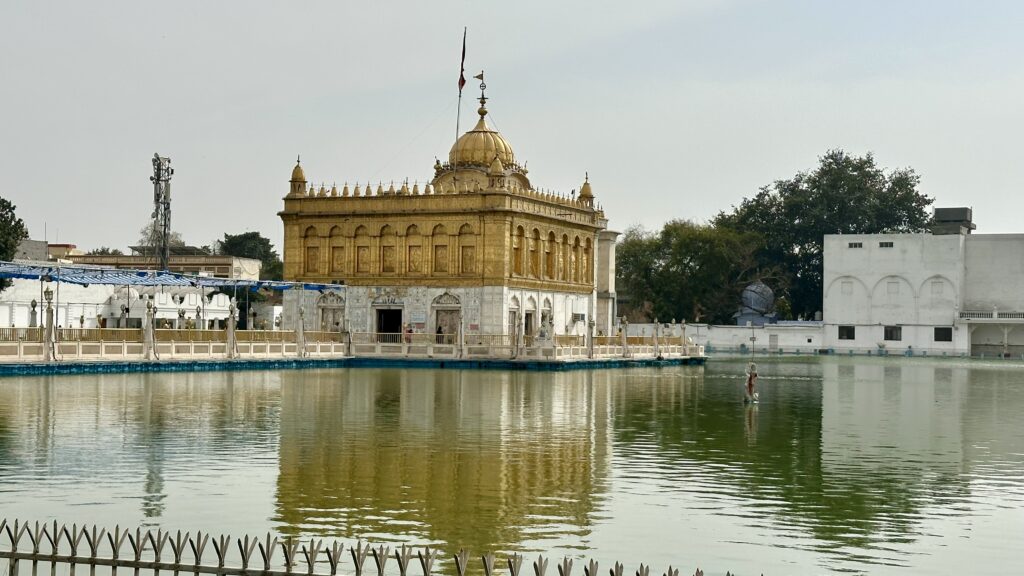
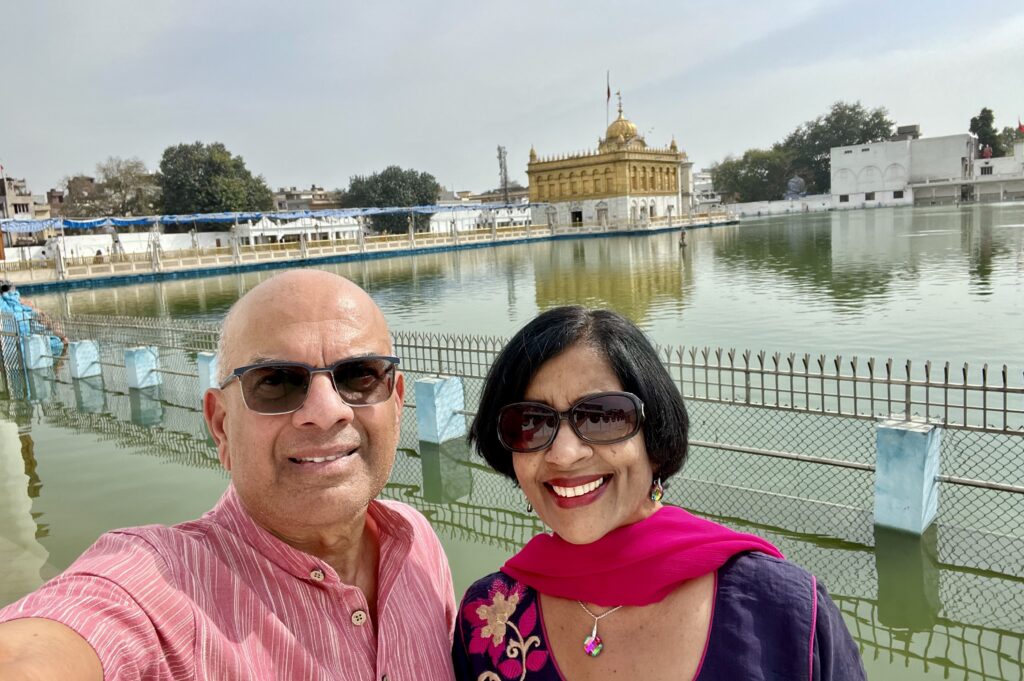
In the courtyard of the temple is the Bara Hanuman Mandir, where twins of Lord Rama and Sita, Lava and Kusha captured and bound Hanuman.
Ram Bagh Gardens – Located in the heart of Amritsar, this is one of the oldest gardens in the city, dating back to the 16th century. It has well-maintained lawns and blooming, colorful flower beds where you can take a leisurely stroll or picnic with loved ones.
Within the garden lies the Maharaja Ranjit Singh Museum, showcasing a captivating collection of artefacts and memorabilia related to Sikh rulers. The museum used to be Ranjit Singh’s summer residence and was built in 1831.
Food in Amritsar – Amritsar is famous for its rich and flavorful cuisine, featuring iconic dishes like Chole Bhature, Dal Makhani, Lalla Mussa Dal, Paratha (bread) stuffed with all kinds of vegetables etc. There are no shortages of good restaurants or Dhaba in Amritsar. We dined in the following restaurants on the 2 days we stayed in Amritsar and ordered the usual stuffed Paratha, dal, and vegetable dish.
- Lunch at Yellow Chilli on day 1
- Lunch at Haveli on day 2
Lalla Mussa Dal – This dish was highly recommended by our guide and we ordered this dish at Yellow Chilli. It did not disappoint. The dish is similar in taste and appearance to Dal Makhani but creamier. This creamy lentil stew, has a base of urad dal, a slim variety of lentil that turns soft and velvety when cooked. The dal is hearty, with multiple levels of richness from the cream and butter.
Lassi – Amritsar is famous for a variety of both sweet and savory lassis – mango, lassi, saffron lassi, peda lassi, salty lassi. We tried both the sweet and salty variety and it was fantastic.